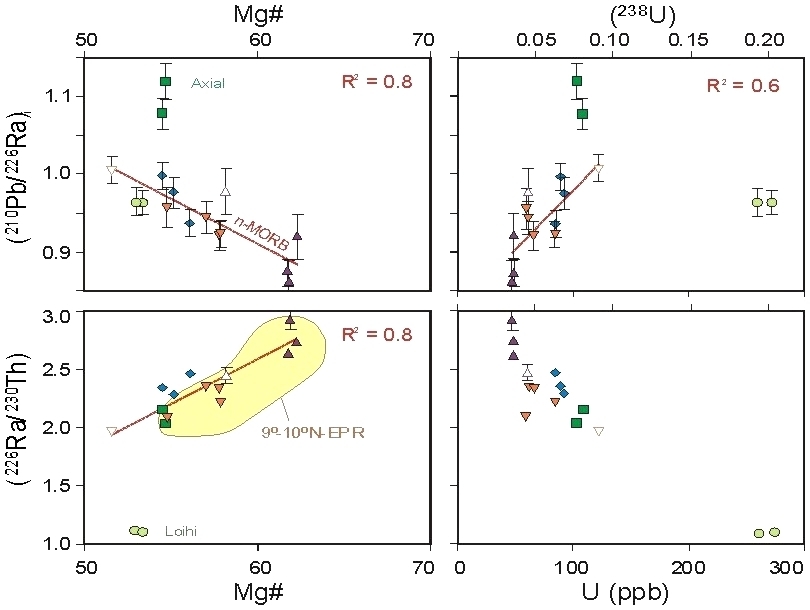Ken Rubin/SOEST Isotope Lab Research

 210Pb-226Ra Disequilibria Very Young Submarine Basalts
210Pb-226Ra Disequilibria Very Young Submarine Basalts
Page Under Construction

 210Pb-226Ra Disequilibria Very Young Submarine Basalts
210Pb-226Ra Disequilibria Very Young Submarine Basalts
Page Under Construction
|
My group's research with this isotope system aims to look at volcanic processes occuring the past century. Our work in this area uses radioactive disequilibria in naturally-occuring isotopes of Th, Ra and Pb in very young sea floor lava. Recently, we have discovered 210Pb-226Ra-230Th radioactive disequilibria in <20-year-old oceanic basalts. We have used this and relationships to other geochemical attributes of the lavas to argue that melts of Earth's mantle can be transported, accumulated and erupted in a few decades, implying that magmatic conditions can fluctuate rapidly at ridge volcanoes. These very fast magmatic timescales imply that eruptions are likely much more frequent than we previously imagined, and that geologic, biologic and chemical conditions can fluctuate rapidly in this setting. | |||
| |||

| |||
For more info please see:
(comming soon)
[
KenChron home page |
Isotope Lab home page |
SOEST home page]
